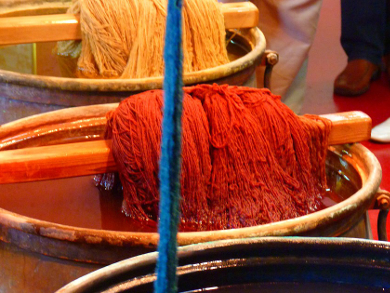Industrial textile dyeing processes typically use 100 to 400 tons of water per ton of fiber, and they require high temperatures and pressures. Wastewater contains toxic dyes and additives that are difficult to remove. Environmentally benign processes tend to be expensive or require advanced equipment.
Giorgio Cevasco, University of Genoa, Italy, and colleagues have devised a dyeing method that uses only one fairly benign additive, and the wastewater can be used again and again. They tested nine ionic liquid additives with water and disperse Red 13 to dye wool, polyester, and cotton fabrics in an open vessel at 95 °C.
Without an additive, the dye produced a dull pink color on fabric samples, and simple rinsing removed some of the dye. Four of the ionic liquids increased dye adherence, producing an intense red color. The best combination of dye fixing, cost, and low toxicity was exhibited by 1-(2-hydroxyethyl)-3-methylimidazolium chloride.
Using 2 g/L of this ionic liquid, all of the dye is transferred to the fabric, and the wastewater has no color residue. The researchers re-used the same water bath three times, replenishing only the dye, not the ionic liquid, and they obtained the same color intensity and color-fastness results.
- Ionic Liquids Can Significantly Improve Textile Dyeing: An Innovative Application Assuring Economic and Environmental Benefits,
Roberto Bianchini, Giorgio Cevasco, Cinzia Chiappe, Christian Silvio Pomelli, Marı́a Jesús Rodrı́guez Douton,
ACS Sustainable Chem. Eng. 2015.
DOI: 10.1021/acssuschemeng.5b00578




